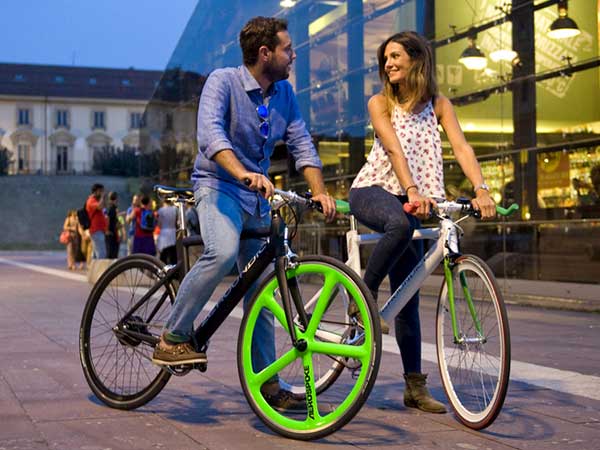Just In
- 3 hrs ago

- 7 hrs ago

- 10 hrs ago

- 12 hrs ago

Don't Miss
- Movies
 Why Abhishek Malhan Unfollowed Bigg Boss OTT 2 Buddy Jiya Shankar? Fukra Insaan Reveals TRUTH
Why Abhishek Malhan Unfollowed Bigg Boss OTT 2 Buddy Jiya Shankar? Fukra Insaan Reveals TRUTH - Finance
 1:1 Bonus, 16.50/Share Dividend: NBFC To Recommend Dividend, Buy For TP Rs 900: Motilal Oswal
1:1 Bonus, 16.50/Share Dividend: NBFC To Recommend Dividend, Buy For TP Rs 900: Motilal Oswal - Sports
 Most Runs in IPL 2024, Orange Cap Holder: Top 10 Highest Run Scorers And Team-wise Top 5 Batters On April 18
Most Runs in IPL 2024, Orange Cap Holder: Top 10 Highest Run Scorers And Team-wise Top 5 Batters On April 18 - News
 Social Media Users Laud Gujarat Titans' Fangirl, Call Her Ana de Armas' Lookalike
Social Media Users Laud Gujarat Titans' Fangirl, Call Her Ana de Armas' Lookalike - Technology
 Nothing Ear, Ear a With ANC, Up to 42.5 Hours of Battery Launched; Check Price and Availability
Nothing Ear, Ear a With ANC, Up to 42.5 Hours of Battery Launched; Check Price and Availability - Education
 PSEB Class 10 Toppers' List 2024, Check the Ranks of Toppers
PSEB Class 10 Toppers' List 2024, Check the Ranks of Toppers - Automobiles
 All About Electronic Stability Control ESC: Working & Advantages
All About Electronic Stability Control ESC: Working & Advantages - Travel
Telangana's Waterfall: A Serene Escape Into Nature's Marvels
Electrically Powered Bicycle = Effective Meaningful Workout
If you find it hard to set aside time specifically for exercise, riding an electrically-powered bicycle on a regular basis can provide you with an effective workout while improving some aspects of cardiovascular health, suggests new research.
Electric-assist bicycles (pedelecs) are equipped with a built-in electric motor that provides modest assistance while the rider is actively pedalling, making it easier to cover greater distances and hilly terrain.
"Commuting with a pedelec can help individuals incorporate physical activity into their day without requiring them to set aside time specifically for exercise," said lead author of the study James Peterman at University of Colorado Boulder in the US.
Pedelecs have steadily grown more popular with consumers over the past decade, especially in Europe and Asia.
While an assist from an electric motor would get a rider disqualified from a competitive cycling competition such as the Tour de France, the researchers wanted to find out whether or not pedelecs could help physically inactive non-cyclists achieve recommended daily fitness levels.
To conduct the study, they recruited 20 non-exercising volunteers who were sedentary commuters (car commuters). The researchers tested various aspects of their health, including blood glucose regulation and fitness.

The volunteers were then asked to substitute their sedentary commute for riding their pedelec at the speed and intensity of their choice for a minimum of 40 minutes three times per week while wearing a heart monitor and a GPS device.
After a month, the volunteers came back to the lab and had their health tested again. The researchers noticed improvements in the riders' cardiovascular health, including increased aerobic capacity and improved blood sugar control.
The findings were published online in the European Journal of Applied Physiology.
Pedelec bicycles are designed to provide motorised assistance up to speeds of 32 km per hour. Above that speed, riders must provide all the pedalling power themselves.
-
 lifeWorld Bicycle Day 2020: Some Interesting Facts Related To Bicycles
lifeWorld Bicycle Day 2020: Some Interesting Facts Related To Bicycles -
 insyncMichael Jackson's Personal Items For Public Viewing
insyncMichael Jackson's Personal Items For Public Viewing -
 anecdotesWhy Ride A Bicycle?
anecdotesWhy Ride A Bicycle? -
 pulseBicycle Legs For Stress
pulseBicycle Legs For Stress -
 healthYear Ender 2023: 7 Fitness Trends That Will Influence Your Fitness Journey In 2024
healthYear Ender 2023: 7 Fitness Trends That Will Influence Your Fitness Journey In 2024 -
 healthMissed Working Out For A Week? Here Are Some Tips To Stretch To Avoid Muscle Pain
healthMissed Working Out For A Week? Here Are Some Tips To Stretch To Avoid Muscle Pain -
 healthOffice Going People – You Should Exercise For This Many Minutes Daily!
healthOffice Going People – You Should Exercise For This Many Minutes Daily! -
 health3 Morning Exercises To Boost Work Productivity
health3 Morning Exercises To Boost Work Productivity -
 healthInternational Coconut Day 2023: How To Drink Coconut Water For Post-Workout Recovery?
healthInternational Coconut Day 2023: How To Drink Coconut Water For Post-Workout Recovery? -
 healthMyths vs Facts: Sugary Snacks Will Not Affect Your Workout Routine
healthMyths vs Facts: Sugary Snacks Will Not Affect Your Workout Routine -
 health5 Weight Loss Food Combinations For People Who Rarely Exercise
health5 Weight Loss Food Combinations For People Who Rarely Exercise -
 fashionDisha Patani’s Athleisure Style Is Ideal To Boost Your Workout Wardrobe
fashionDisha Patani’s Athleisure Style Is Ideal To Boost Your Workout Wardrobe


 Click it and Unblock the Notifications
Click it and Unblock the Notifications



